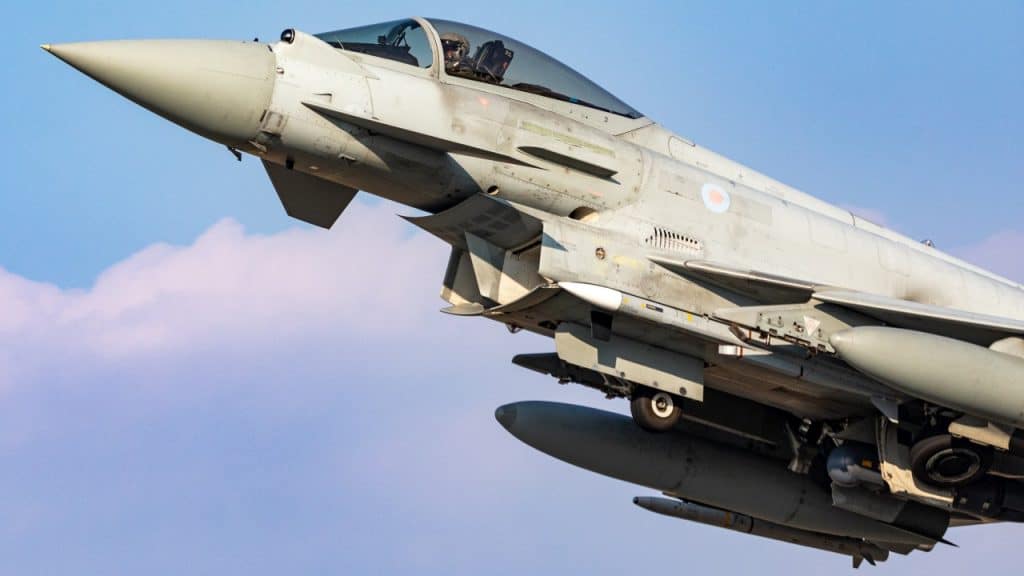Throughout Ireland’s existence as a separate state organism – first as the Irish Free State and then as a completely independent state of Ireland – neutrality has been one of the cornerstones of its international policy. Although it is not included in the local constitution, all subsequent governments tried to at least keep up appearances. But the world is rushing forward and some countries find it harder and harder to just stand by. For Ireland, this process could mean a partial re-submission to London.
For historical reasons, this prospect raises understandable concerns on the Emerald Isle. Worse still, many years ago, the answer to the question of whether Ireland is really neutral is no longer unambiguous. Sean O’Riordan writes that the local public will have to consider the issue of further neutrality “in the coming months because, whether we like it or not, our official position and on whose side we stand has become the focus of attention. on the Russian invasion of Ukraine ”.
-ADVERTISEMENT-

According to O’Riordan, Irish neutrality has long been a pipe dream, and points to the Anglo-Irish accord under which the Royal Air Force is responsible for defending airspace over Ireland as a turning point. This country does not have any fighter planes, so it would not be able to intercept combat aircraft of a possible enemy or – this is a more likely scenario – civilian aircraft captured by terrorists.
Of course, the matter is not that simple. The RAF is not just Ireland’s defender. The main task of the RAF is to secure the Irish Flight Information Region and to intercept suspicious aircraft that the Irish air force would have to deal with if it had the means to do so. It is unofficially known that the agreement allows the RAF Typhoons to freely use Irish airspace in the performance of these tasks.

A pair of Irish PC-9Ms. The plane in the foreground is armed with machine gun pods and unguided missile launchers.
(Irish Defense Forces)
From the very beginning, the blade of this undertaking was aimed at Russian planes carrying out long patrols over the North Sea and approaching Great Britain or – after passing just Ireland – even to France and Spain. Take, for example, the situation from February 2017. Two carriers of the Tu-160 cruise missile (NATO: Blackjack) passed Great Britain and then Ireland and headed for Brittany. They then headed towards Spain, then turned north and passed the Outer Hebrides (northwest of Scotland) on their way back to Russia. In such flights, the Emerald Island would be a kind of shield for the Russians, protecting them from British fighters defending not only Great Britain itself, but also allied states.
The defense of Ireland itself is only a side benefit that Ireland gets for free (at least from a British perspective) from this system naturally because of its geographic location. Anyway, in Great Britain you can sometimes hear voices of indignation at “wasting tax money” on the defense of Ireland. In Ireland, on the other hand, controversy was raised by the way the agreement was concluded. It was all agreed secretly at intergovernmental level, and the Irish Defense Forces did not even have a vote, despite RAF delegates apparently wanting to consult with colleagues on the other side of the Irish Sea.
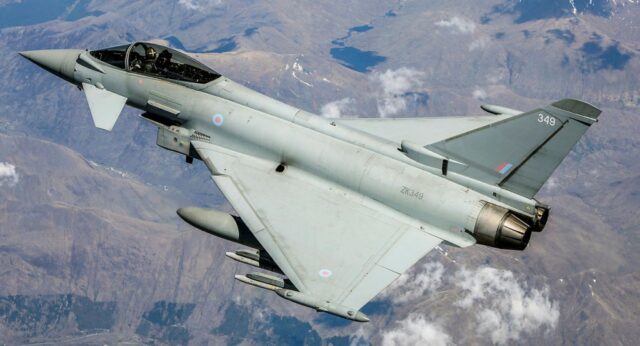
British Typhoon FGR. 4.
(Corporal Alex Scott / UK MOD © Crown copyright 2021)
It is hardly surprising that such an arrangement raises concerns (even if exaggerated) about reducing Ireland to the role of a protectorate – sovereign for domestic use, but in international politics dependent on the colonizer and consisting in its protection. And since the RAF is allowed to use Irish skies to defend the United Kingdom, it can be interpreted as a military alliance (if not de jure, then at least de facto) between the two countries, which in turn means that Dublin has abandoned its policy of neutrality.
An obvious question then arises: can the Irish Air Corps (An tAerchór) build its own fighter air force? It has been asked regularly for years, and each time the answer seems to be yes in theory, but in practice there is no political will. Perhaps it will appear now, when the alternative is addiction to the former oppressor, but then there are two more obstacles to overcome: money and time. Faced with such a metaphorical wall, the Irish would find funds to buy airplanes and train pilots, but time is not made of rubber and there would be a huge shortfall to make up.
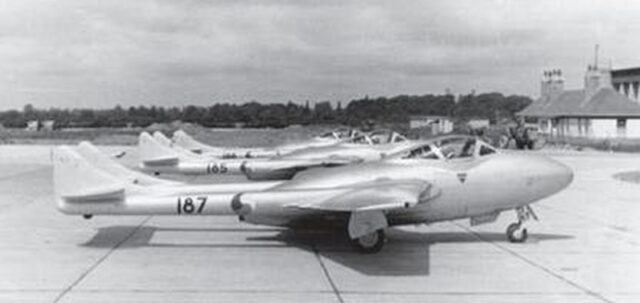
Irish Vampires.
(A Pictorial History of the Defense Forces)
Ireland has no fighter planes since 1975. The last (and the only ones with jet propulsion) were the British De Havillandy Vampires T.55. So there are no pilots or technicians experienced in working with jet airplanes, even of the old generation, there is no one who could transfer the experience to younger personnel. Everything would have to be built almost from scratch, and over the years the country would still be doomed to the role of a “protectorate”.
Currently, An tAerchór has one Britten-Norman BN-2 Islander reconnaissance aircraft, two CN 235 maritime patrol aircraft and three PC-12NG used for reconnaissance and transport, including as an air ambulance. The shock component consists of eight training and combat PC-9Ms. The planes are complemented by helicopters: six AW139 and two H135.
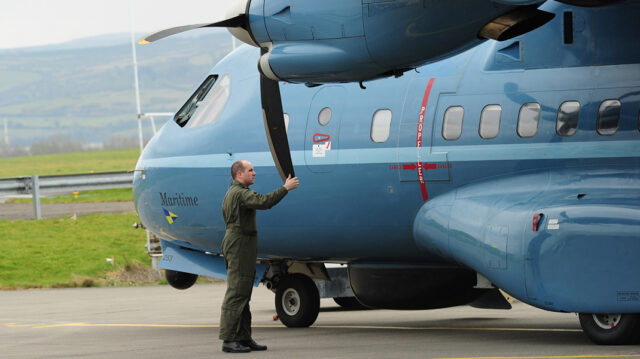
Irish CN 235.
(Irish Defense Forces)
Along with the purchase of planes, it would also be necessary to acquire radar stations. Currently, Dublin has very limited foreign aircraft tracking capabilities. In principle, it can only track aircraft that have transponders that enable their identification. Meanwhile, Russian cruise missile carriers usually switch off transponders, which – apart from purely military issues – pose a threat to civil aviation and make it difficult to control air traffic. Last month, EUR 200 million was announced for the country’s first modern military radar, but only the future will show whether the word will become flesh.
Senator Gerard Craughwell, a veteran of both the Irish and British armed forces, maintains that Ireland has never really been neutral. For neutrality manifests itself in the event of war, and Dublin has had the opportunity to demonstrate true neutrality only once: during the Second World War. And he failed this test, unequivocally supporting the allies, even though Ireland did not enter the war by force. However, it gave the Allied troops the right to march and fly, and shared intelligence. German airmen who landed in Ireland were interned, and the Allies were allowed to return to their own.
At sea
A separate issue for consideration is the protection of territorial waters and the exclusive economic zone. It briefly made the headlines in January this year, in a period of growing tensions on the Ukrainian-Russian border, which, as we already know today, were the prelude to a bandit invasion. Vessels bound for the Mediterranean, including the “Far Sea and Ocean Zone” missile cruiser Marshal Ustinov of Project 1164 Atlant, were scheduled to perform exercises in Ireland’s EEZ along the way.
The exercise was canceled following a protest by Irish fishermen who announced their intention to peacefully block the exercise. In retrospect, we know that it did not matter much for the Russians, and their recall was perhaps even planned as a “goodwill gesture”. However, concerns have been raised that the exercise is just a cover and the real aim is to cut the submarine cables connecting Europe and North America so as to disrupt transatlantic connectivity just before the invasion of Ukraine.
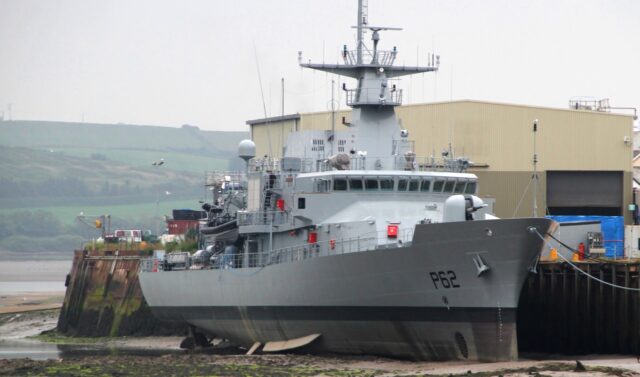
LÉ James Joyce (P62) – the second Samuel Beckett class ship.
(Tony Hisgett)
The Kremlin was interested in these cables before. Last year, their zone hosted a peculiar flagship of the Russian Main Deep Sea Research Board – the 108-meter Jantar of the 22010 Kriujs project. The Russians classify it as an oceanographic vessel, but in practice it is a reconnaissance ship, with a rich apparatus of two – military and civilian – and capable of searching for objects on the seabed. It is equipped with two large autonomous underwater vehicles, capable of taking high-resolution photos of the seabed and undersea infrastructure, as well as of picking up objects from the seabed. Certainly, cutting the cable or placing explosives on it does not exceed their capacity.
Aware that the threat is not over, the British plan to send a ship (or vessels) to monitor the safety of submarine cables in Ireland’s EEZ. The Irish Maritime Service (An tSeirbhís Chabhlaigh) does not have its own units that could perform this function. Its entire fleet consists of four Samuel Beckett-class patrol ships and two (including one out of order) class Róisín.
Thus, another area of dependence on Great Britain will be created. Sean O’Riordan, quoted above, even suggests that the announcement of this intention in public was a diplomatic maneuver aimed at drawing “neutral” Ireland even more into the NATO security system. Especially since, from the Russian perspective, Ireland is already a part of it.
See also: The French will repair the Perle submarine by combining it with a second unit
Cpl Drummee RAF / UK MOD © Crown copyright 2022

